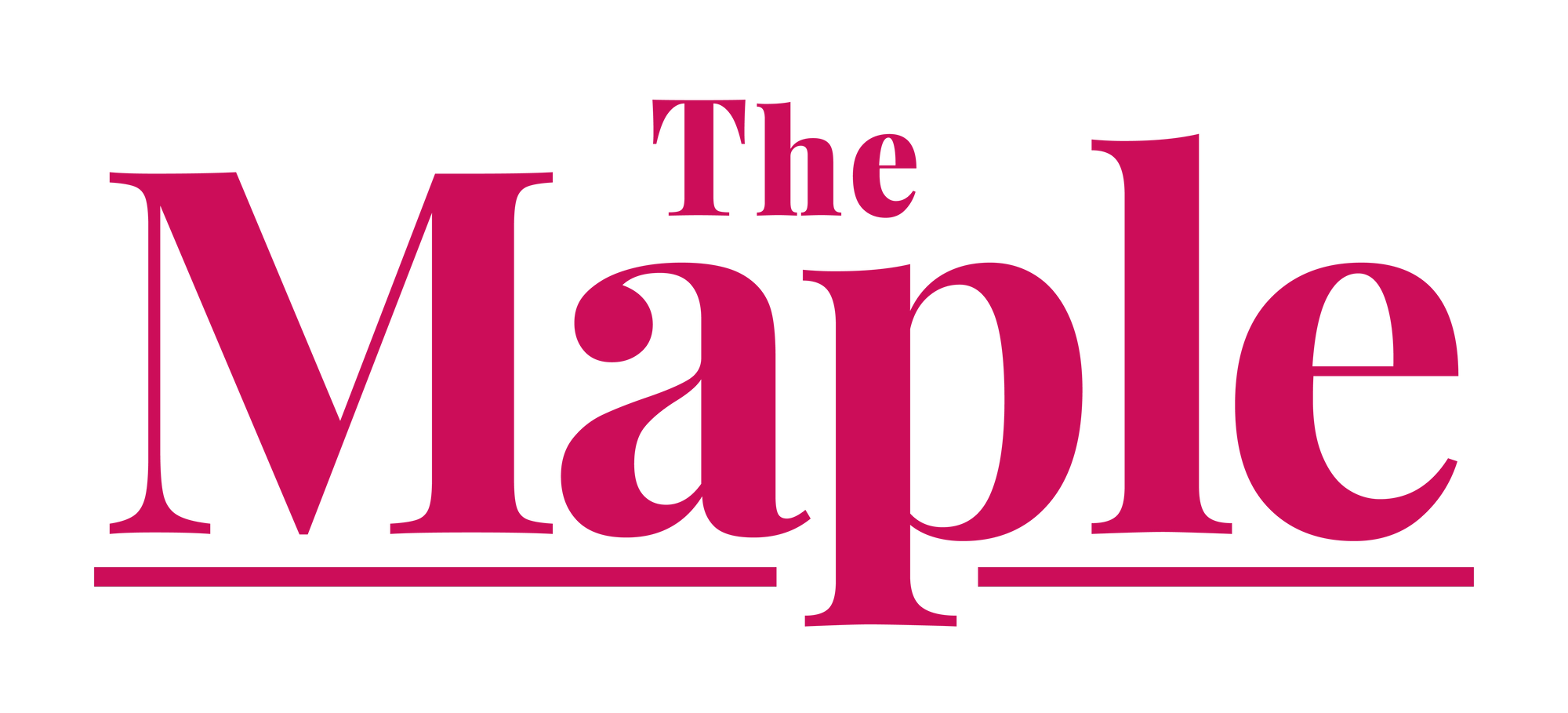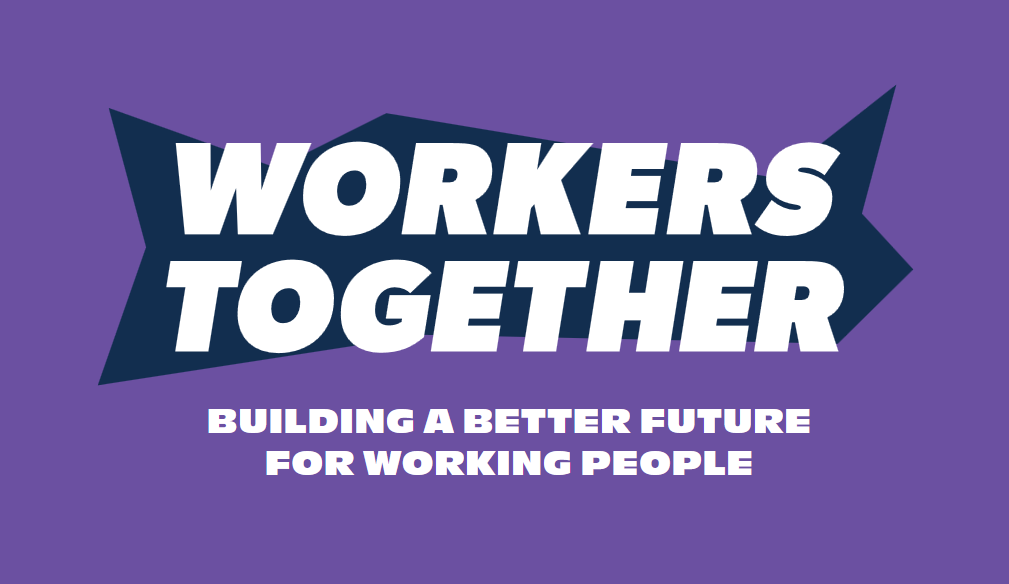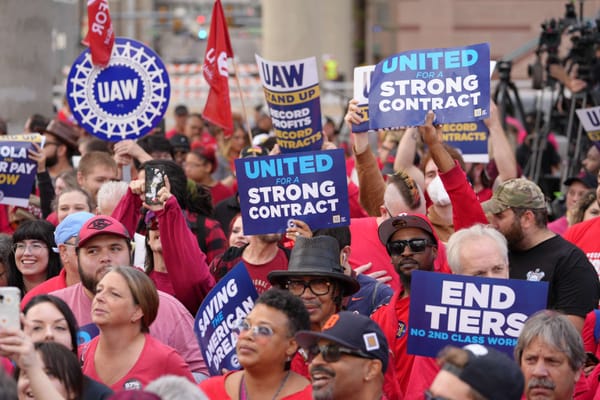
The federal election is now in full swing. With the American trade war compounding a years-long affordability crisis, the cost of living is predictably a central issue for voters. According to a recent Ipsos poll, 23 per cent of Canadians ranked cost-of-living as their top issue.
To address affordability, the two major parties have thus far offered a series of tax cuts. These proposals are economically nonsensical and regressive, undermine solidarity, and further contribute to the right-wing drift of Canadian politics.
Conservative Leader Pierre Poilievre has proposed an income tax cut that he claims would save the average worker $900 per year and the average family $1,800 per year. The plan involves reducing the rate for the lowest tax bracket from 15 per cent to 12.75 per cent. Continuing to court working-class voters, Poilievre announced the plan from a packaging plant in Brampton, Ont.
The price of this measure, a sizable $14 billion annually when fully implemented, would blow a massive hole in the federal budget when the fiscal capacity to address the fallout from the trade war with the United States is desperately needed.
The Conservatives are suggesting that the tax cut would create jobs and thus strengthen Canada’s economy in the face of U.S. President Donald Trump’s tariff threat. Of course, the track record on tax cuts promoting job creation isn’t great.
The Conservatives also claim that they will pay for their tax cut by cutting foreign aid, consultant fees and corporate subsidies, and cut government waste and reduce bureaucracy while leaving social programs untouched. The Conservatives have also promised to waive GST on new home purchases under $1.3 million, a move the Liberals have echoed with their plan to do the same on homes worth up to $1 million, though just for first-time homebuyers, unlike the Conservatives.
Poilievre is additionally proposing to reduce taxes for seniors who work past the age of retirement. The Conservatives would also allow RRSP contributions up to age 73, instead of 71, further reducing income tax revenue. Poilievre has pledged to leave the current retirement age and maintain public pension programs, however. This is a departure from Poilievre’s efforts during the Harper government to cut the Canada Pension Plan and raise the retirement age from 65 to 67.
Given the huge cost of these proposed tax cuts, and the large share of federal spending devoted to program expenses, promises to maintain program spending are difficult to square with reality. As it stands, the Conservative Party has not produced a fully costed platform.
The Liberals have pitched their own tax break, reducing the marginal tax rate by one percentage point and saving individual filers up to $412 and families up to $825 per year. This plan would cost $5.9 billion annually. According to their media release, more than 22 million Canadians would benefit from the tax measure.
Carney has also promised that his tax cut wouldn’t be paid for through federal program cuts, including social and health transfers to the provinces, but rather through reviews of spending and enhancing program efficiencies.
Carney has criticized Poilievre’s plan to impose a “dollar-for-dollar” scheme, whereby any new dollar of spending must be met with a dollar worth of spending reduction, as setting the stage for cuts to new programs such as childcare, pharmacare and dental care. Yet, the Liberal leader’s own pledge to rein in federal spending while increasing capital investments seems to lead toward the very same need for program cuts.
Moreover, in an effort to eat the Conservatives’ lunch, the Liberals already eliminated the consumer carbon tax and reversed the capital gains tax inclusion rate increase. Although the carbon tax was politically unpopular and poorly understood, it was mildly progressive, distributing a net benefit through the Canada Carbon Rebate to lower- and middle-income households. Increasing the capital gains inclusion rate was a political no-brainer: it simply made the wealthiest sliver of Canadians pay marginally more. The wealthy will now get to keep more of their investment income tax free.
As should be clear, both parties’ plans are hugely expensive. As David Macdonald at the Canadian Centre for Policy Alternatives (CCPA) points out in a helpful dissection of the two tax proposals, it would cost about $6 billion annually to cut child poverty in half, by comparison. (In fact, you can find any number of better things to do with the $6 billion to $14 billion per year in the CCPA’s Alternative Federal Budget.)
As Macdonald further shows, 9.6 million of the lowest earners in the country would see no benefit at all from either parties’ plan. Why? Because their incomes are already so low that they don’t pay federal income tax at all. Of those living in officially defined poverty, just 14 per cent would see any benefit. The average benefit for a person living in poverty under the Liberal plan would be $11. Under the Conservative plan, that person would net $25. Don’t spend it all in one place.
NDP Leader Jagmeet Singh has criticized both the Conservative’s and Liberal’s plans as “tax cuts for millionaires,” and he has a point. Reducing the first tax bracket, which applies to income up to $57,375, means all tax filers will receive relief on this first portion of their incomes, no matter how much they earn above that.
Macdonald from the CCPA, for example, finds that the richest 10 per cent of tax filers would average $310 under the Liberal plan and $694 under the Conservative plan. These plans would thus blow a massive hole in the federal budget to provide a few hundred extra dollars to people earning more than $129,000 per year. Overall, Macdonald finds that the best-off 40 per cent of tax filers would get three-quarters of all the benefits of the tax cuts proposed by either party, while the poorest get nothing.
The NDP plan, by comparison, would increase the portion of income free from tax for those earning below $177,882, and lower it for those earning above that amount. This is more progressive than the ill-conceived giveaways proposed by the Liberals and Conservatives, but it too is hardly worth the cost ($10.4 billion annually) and promotes the very same anti-tax politics that should be anathema to the left. To their credit, the NDP is also calling for doubling the new Canada Disability Benefit and raising the Guaranteed Income Supplement for seniors.
At the same time, though, the NDP also wants to remove GST from essentials, such as home heating and internet bills. Yet, cuts to consumption taxes like the GST suffer from the same problem as the other two parties’ income tax plans: by providing uniform tax relief to all, you award benefits to the rich who don’t need them. Although lower income workers spend proportionally more of their incomes on essentials, and thus benefit disproportionately from consumption tax relief, such plans nevertheless extend unnecessary benefits to the wealthy and, perhaps more importantly, starve the public sector of needed funds.
All of these various tax plans are ostensibly meant to address the continued cost-of-living crisis impacting Canadian workers and families. There’s no question that food, shelter and energy costs have caused significant pain for working-class households across the country. According to Royal Bank, for example, the average cost of groceries for a family of four rose 26 per cent between 2019 and 2024. However, these cost pressures are not the result of taxes, but rather because corporations drove up prices and increased their profit shares in response to the post-pandemic supply shock.
Cutting taxes does nothing to address corporate power or worker exploitation. Moreover, these types of ‘tax politics’ have a distinctively right-wing flavour. It’s not surprising that the Canadian Taxpayers Federation welcomed the Liberal tax proposal, with their federal director praising the plan for “letting Canadians keep more of their own money.” The anti-tax organization was even more supportive of Poilievre’s proposed tax cut.
To make an obvious point, tax cuts aren’t wage raises, and they do nothing to address the distribution of income and wealth between the vast majority of workers and the wealthy. In fact, tax cuts are almost always regressive, providing more benefits to the wealthy and well-off than to workers and low-income earners.
This is especially problematic now. Draining away public revenues at a time when we will likely need a massive public spending push to address the economic impacts of Trump’s trade war is a terrible idea.
But perhaps most importantly, promising tax cuts contributes to an anti-social politics that discourages people from thinking about the collective good and the public services necessary to maintain and promote it.
The fact of the matter is a robust system of public services and benefits requires taxes paid by us all. Yes, we need to tax the rich much, much more, but that will never be enough on its own to fund the expansive public services that we all need and deserve. There are simply too few rich people around to tap for funds, thankfully. Rather, workers have and will continue to, for the most part, pay for their own welfare state. The left shouldn’t shy away from this fact.
Contributing to our collective well-being is the basis for solidarity. Part of the project of neoliberalism involved transforming the welfare state from something that provides vital benefits and services to people into a series of tax credits. This needs to be resisted and reversed.
A left-wing, working-class political program should advocate for the broadest social safety net possible to protect us all, not tax cuts that undermine solidarity.
Recent Class Struggle Issues
- March 24 | Carney May Be Better Than Poilievre, But Serious Issues Remain
- March 17 | North American Auto Unions Clash Over Trump’s Tariffs
- March 10 | Canada’s Response To Trump’s Trade War Must Centre Workers
- March 4 | Quebec Is Taking Trudeau’s Lead And Attacking Unions







